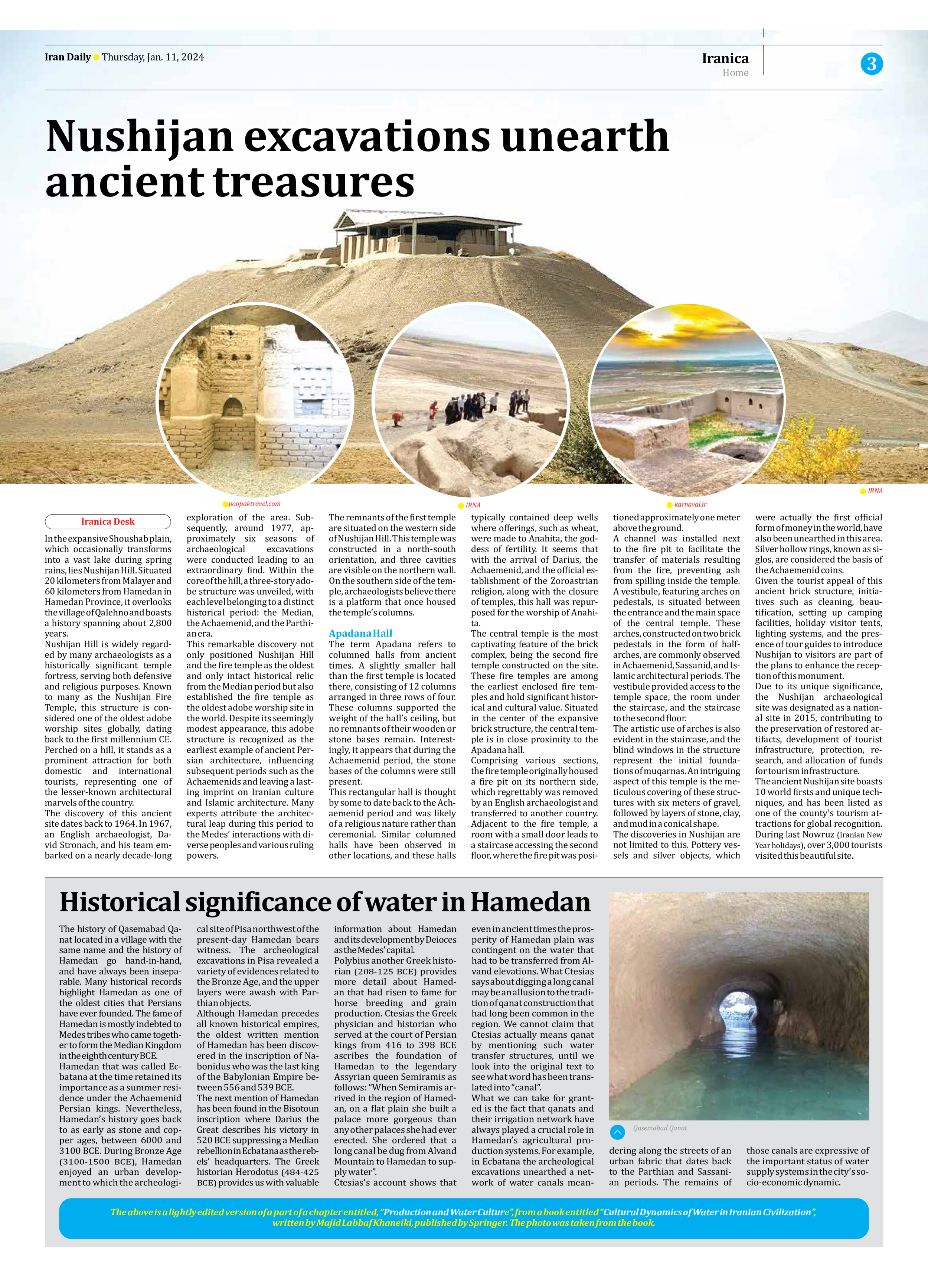
Historical significance of water in Hamedan
The history of Qasemabad Qanat located in a village with the same name and the history of Hamedan go hand-in-hand, and have always been inseparable. Many historical records highlight Hamedan as one of the oldest cities that Persians have ever founded. The fame of Hamedan is mostly indebted to Medes tribes who came together to form the Median Kingdom in the eighth century BCE.
Hamedan that was called Ecbatana at the time retained its importance as a summer residence under the Achaemenid Persian kings. Nevertheless, Hamedan’s history goes back to as early as stone and copper ages, between 6000 and 3100 BCE. During Bronze Age (3100-1500 BCE), Hamedan enjoyed an urban development to which the archeological site of Pisa northwest of the present-day Hamedan bears witness. The archeological excavations in Pisa revealed a variety of evidences related to the Bronze Age, and the upper layers were awash with Parthian objects.
Although Hamedan precedes all known historical empires, the oldest written mention of Hamedan has been discovered in the inscription of Nabonidus who was the last king of the Babylonian Empire between 556 and 539 BCE.
The next mention of Hamedan has been found in the Bisotoun inscription where Darius the Great describes his victory in 520 BCE suppressing a Median rebellion in Ecbatana as the rebels’ headquarters. The Greek historian Herodotus (484-425 BCE) provides us with valuable information about Hamedan and its development by Deioces as the Medes’ capital.
Polybius another Greek historian (208-125 BCE) provides more detail about Hamedan that had risen to fame for horse breeding and grain production. Ctesias the Greek physician and historian who served at the court of Persian kings from 416 to 398 BCE ascribes the foundation of Hamedan to the legendary Assyrian queen Semiramis as follows: “When Semiramis arrived in the region of Hamedan, on a flat plain she built a palace more gorgeous than any other palaces she had ever erected. She ordered that a long canal be dug from Alvand Mountain to Hamedan to supply water”.
Ctesias’s account shows that even in ancient times the prosperity of Hamedan plain was contingent on the water that had to be transferred from Alvand elevations. What Ctesias says about digging a long canal may be an allusion to the tradition of qanat construction that had long been common in the region. We cannot claim that Ctesias actually means qanat by mentioning such water transfer structures, until we look into the original text to see what word has been translated into “canal”.
What we can take for granted is the fact that qanats and their irrigation network have always played a crucial role in Hamedan’s agricultural production systems. For example, in Ecbatana the archeological excavations unearthed a network of water canals meandering along the streets of an urban fabric that dates back to the Parthian and Sassanian periods. The remains of those canals are expressive of the important status of water supply systems in the city’s socio-economic dynamic.
The above is a lightly edited version of a part of a chapter entitled, “Production and Water Culture”, from a book entitled “Cultural Dynamics of Water in Iranian Civilization”,
written by Majid Labbaf Khaneiki, published by Springer. The photo was taken from the book.







